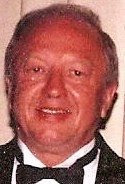The top-secret world the government created in response to the terrorist attacks of Sept. 11, 2001, has become so large, so unwieldy and so secretive that no one knows how much money it costs, how many people it employs, how many programs exist within it or exactly how many agencies do the same work.
These are some of the findings of a two-year investigation by The Washington Post that discovered what amounts to an alternative geography of the United States, a Top Secret America hidden from public view and lacking in thorough oversight. After nine years of unprecedented spending and growth, the result is that the system put in place to keep the United States safe is so massive that its effectiveness is impossible to determine.
The investigation's other findings include:
* Some 1,271 government organizations and 1,931 private companies work on programs related to counterterrorism, homeland security and intelligence in about 10,000 locations across the United States.
* An estimated 854,000 people, nearly 1.5 times as many people as live in Washington, D.C., hold top-secret security clearances.
* In Washington and the surrounding area, 33 building complexes for top-secret intelligence work are under construction or have been built since September 2001. Together they occupy the equivalent of almost three Pentagons or 22 U.S. Capitol buildings - about 17 million square feet of space.
* Many security and intelligence agencies do the same work, creating redundancy and waste. For example, 51 federal organizations and military commands, operating in 15 U.S. cities, track the flow of money to and from terrorist networks.
* Analysts who make sense of documents and conversations obtained by foreign and domestic spying share their judgment by publishing 50,000 intelligence reports each year - a volume so large that many are routinely ignored.
These are not academic issues; lack of focus, not lack of resources, was at the heart of the Fort Hood shooting that left 13 dead, as well as the Christmas Day bomb attempt thwarted not by the thousands of analysts employed to find lone terrorists but by an alert airline passenger who saw smoke coming from his seatmate.
They are also issues that greatly concern some of the people in charge of the nation's security.
"There has been so much growth since 9/11 that getting your arms around that - not just for the DNI [Director of National Intelligence], but for any individual, for the director of the CIA, for the secretary of defense - is a challenge," Defense Secretary Robert M. Gates said in an interview with The Post last week.
In the Department of Defense, where more than two-thirds of the intelligence programs reside, only a handful of senior officials - called Super Users - have the ability to even know about all the department's activities. But as two of the Super Users indicated in interviews, there is simply no way they can keep up with the nation's most sensitive work.
"I'm not going to live long enough to be briefed on everything" was how one Super User put it. The other recounted that for his initial briefing, he was escorted into a tiny, dark room, seated at a small table and told he couldn't take notes. Program after program began flashing on a screen, he said, until he yelled ''Stop!" in frustration.
"I wasn't remembering any of it," he said.
Underscoring the seriousness of these issues are the conclusions of retired Army Lt. Gen. John R. Vines, who was asked last year to review the method for tracking the Defense Department's most sensitive programs. Vines, who once commanded 145,000 troops in Iraq and is familiar with complex problems, was stunned by what he discovered.
"I'm not aware of any agency with the authority, responsibility or a process in place to coordinate all these interagency and commercial activities," he said in an interview. "The complexity of this system defies description."
The result, he added, is that it's impossible to tell whether the country is safer because of all this spending and all these activities. "Because it lacks a synchronizing process, it inevitably results in message dissonance, reduced effectiveness and waste," Vines said. "We consequently can't effectively assess whether it is making us more safe."
Monday, July 19, 2010
Subscribe to:
Post Comments (Atom)

No comments:
Post a Comment